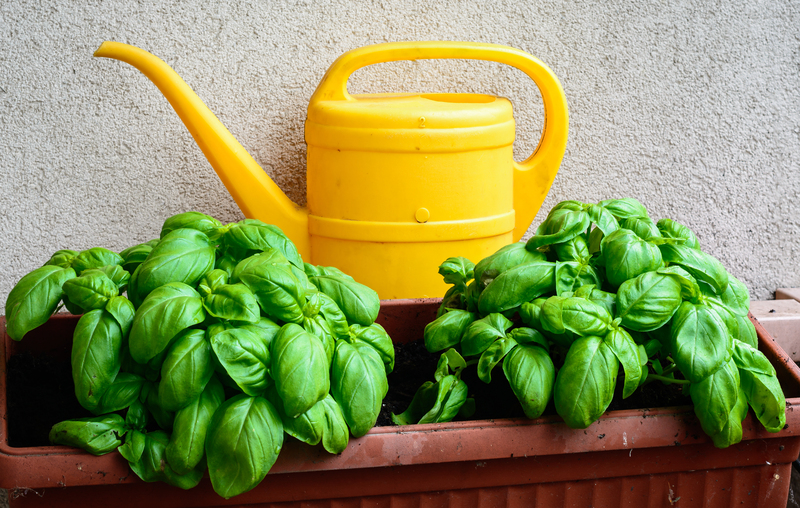From soil to sky: Gardens bridging the gap in climate solutions
Posted on 20/08/2025
From Soil to Sky: Gardens Bridging the Gap in Climate Solutions
Climate change is a critical global challenge that requires a multifaceted approach. While large-scale reforms and technologies frequently dominate the conversation, one powerful, accessible, and underestimated mitigation tool is thriving all around us: gardens. From the soil beneath our feet to the air above our heads, gardens hold remarkable potential to bridge the gap in global climate solutions. In this article, we dive deep into the ways gardens contribute to climate action and foster more resilient communities.
Understanding Gardens as Climate Solution Hubs
When we think of climate action, images of solar panels and wind farms often come to mind. However, gardens--be they community spaces, backyards, urban farms, or rooftop oases--serve as microcosms of nature's resilience and innovation. From soil regeneration to carbon sequestration, gardens have a key role to play in addressing climate change.
- Soil Health: Gardens nurture soil, enhance its structure, and promote biological activity.
- Carbon Capture: Well-managed gardens sequester carbon both above and beneath the ground.
- Biodiversity: They provide habitat for pollinators and increase the resilience of urban and rural ecosystems.
- Temperature Regulation: Gardens reduce the urban heat island effect, cooling our cities naturally.
- Food Security: Homegrown produce means fewer food miles and lower emissions.

The Science Behind Gardens and Climate Mitigation
How do gardens actually help fight climate change? The answer lies in the intricate relationship between plants, soil, and the atmosphere. Plants absorb carbon dioxide during photosynthesis, capturing this greenhouse gas and storing it as organic matter. Healthy soil acts as a long-term carbon sink, keeping it out of the atmosphere.
1. Carbon Sequestration: From Roots to Leaves
The process starts at the soil level. Gardeners who use compost, mulch, and minimal tillage help soils accumulate organic matter. This not only improves fertility but locks atmospheric carbon into the ground for years, possibly even decades.
- Compost returns plant material to the soil, increasing soil organic carbon.
- Cover crops and perennials extend the rooting season, supporting year-round carbon storage.
- Healthy plants reduce soil erosion, a major factor in carbon loss.
Fact: According to the FAO, just a 0.4% annual increase in global soil carbon stocks could offset the world's annual greenhouse gas emissions from fossil fuel burning.
2. Urban Gardens: Cooling Our Cities, Cleaning Our Air
Urban spaces often suffer from the "urban heat island" effect. Concrete absorbs and radiates heat, while buildings trap polluted air. Gardens act as natural coolers. Their vegetation shades surfaces, encourages transpiration, and lowers surface and ambient air temperatures. Moreover, plants filter harmful particulates and gases, purifying the urban air.
- Studies show that green roofs can reduce city temperatures by several degrees.
- Public parks and vertical gardens cut ambient pollution, benefiting urban dwellers.
3. Water Retention and Flood Prevention
Gardens enhance soil structure, allowing earth to absorb more rainfall and prevent runoff. In times of drought or torrential downpours--both increasingly common due to climate change--well-designed gardens mitigate the risk of flood and erosion, helping stabilize local water cycles.
Gardens as Adaptation Tools for a Warming World
Beyond mitigation, gardens support adaptation--helping people and ecosystems cope with the inevitable impacts of climate change.
Boosting Biodiversity and Ecosystem Resilience
Gardens provide valuable habitat for bees, butterflies, birds, and beneficial insects. By incorporating diverse plantings and native species, gardens help restore interconnected webs of life. This increased biodiversity makes local environments more resilient in the face of heatwaves, droughts, and new pests.
Building Food Security and Reducing Emissions
Community and household gardens offer a buffer against global food disruptions. Localized food production:
- Reduces dependence on long supply chains and imported food.
- Decreases emissions from packaging and transportation.
- Fosters nutrition and self-reliance, especially in food deserts.
Example: The Victory Gardens of the 1940s produced one-third of America's fresh vegetables. Imagine the impact if even a fraction of households embraced home gardening today!
Mental Health, Wellbeing, and Climate Engagement
Being close to nature enhances mood, lowers stress, and fosters environmental stewardship. As climate anxiety grows, spending time in gardens reconnects people with hope and purposeful action. It empowers communities to enact change right where they live.
Practical Strategies: Growing Climate-Positive Gardens
Anyone can cultivate a climate-friendly garden, whether you have a sprawling backyard, a rooftop, or a single balcony pot. Below are proven strategies to make your growing space part of the solution:
1. Integrate Native and Perennial Plants
- Native plants require less water, fertilizer, and care.
- Perennials return year after year, storing carbon long-term and improving soil health.
- Mix in trees and shrubs for deeper carbon capture.
2. Embrace Regenerative Gardening Techniques
- No-till or low-till gardening: Minimizing soil disturbance protects carbon stores and soil microbes.
- Compost kitchen and yard waste: Returning organic matter to the earth enriches soil and sequesters carbon.
- Mulch garden beds: Mulching conserves moisture, prevents weeds, and slowly feeds the soil as it breaks down.
3. Maximize Biodiversity
- Plant a variety of flower shapes and bloom times to feed pollinators year-round.
- Allow some "messy" areas for habitat--logs, leaves, and brush piles provide homes for wildlife.
- Rotate crops and plant polycultures to reduce pest problems and enhance resilience.
4. Capture and Manage Water Wisely
- Install rain barrels and direct downspouts to garden beds.
- Create swales, rain gardens, or permeable paths for absorption and flood protection.
- Drip irrigation and mulching reduce water needs and prevent waste.
Innovative Garden Models Leading the Way
Across the world, creative garden projects are demonstrating what's possible when communities, scientists, and policymakers come together:
- Urban Food Forests: Cities like Atlanta and Seattle are creating public food forests--diverse, edible landscapes accessible to all residents.
- School Gardens: Empowering future generations with hands-on climate and nutrition education while supplying communities with fresh food.
- Pollinator Highways: Linked networks of gardens in roadsides and yards provide safe corridors for bees, butterflies, and birds, supporting biodiversity at scale.
- Green Roofs and Walls: High-rise ecosystems absorb carbon, cool buildings, and support urban wildlife.
Overcoming Common Challenges in Garden-Based Climate Solutions
Despite their promise, maximizing gardens' role in climate solutions requires overcoming key barriers:
- Access: Ensuring that all communities--especially urban areas and marginalized groups--have space and resources for gardening.
- Education: Sharing knowledge about regenerative gardening practices to maximize climate impacts.
- Policy Support: Implementing incentives for urban agriculture, green infrastructure, and native planting in public spaces.
Collaboration between local governments, nonprofits, schools, and residents can ensure that gardens, from community plots to wildflower hedges, become widespread tools for climate resilience.

The Future: Gardens as Central Pillars in Climate Action
Embracing gardens as essential climate solutions is not just about planting more trees--it's about redesigning our cities, suburbs, and countrysides to foster harmony between humanity and nature. Each garden, no matter the size, offers a patch of hope in the fight against a warming planet. Climate-positive gardens connect soil and sky, bridging the gap between individual action and global impact.
How You Can Be Part of the Solution
Ready to make a difference? Here's how you can take climate action through gardening, regardless of your space:
- Start a garden--even a few pots on a balcony count.
- Grow native plants to support local wildlife.
- Compost food scraps and use organic mulch.
- Avoid synthetic fertilizers and pesticides.
- Share your garden harvest--and your knowledge--with neighbors and community.
Conclusion: Seeding a Greener Tomorrow
From soil to sky, gardens represent a dynamic bridge in climate solutions. They sequester carbon, cool urban environments, nurture biodiversity, and foster food security. More than that, gardens empower us all to be proactive stewards of our environment, restoring the natural balance one plant at a time. As we face the era-defining challenge of climate change, let us look to our gardens--not only as places of beauty and bounty but as the very foundation of a sustainable, climate-resilient future.
Let's cultivate climate solutions--from soil to sky--starting in our own backyards.

